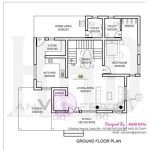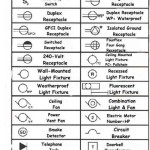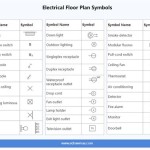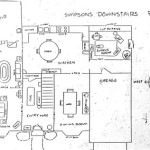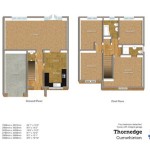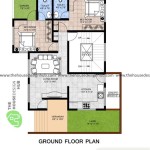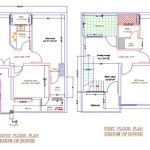Mountain House Plans With Basement
Mountain house plans with basements offer a unique blend of functionality and connection to the natural environment. The sloping terrain often associated with mountain locations makes incorporating a basement a practical and aesthetically pleasing choice. These plans can maximize usable living space while respecting the contours of the land.
One of the primary advantages of a basement in a mountain home is the opportunity to expand the living area without increasing the footprint of the structure. This is particularly beneficial in areas where building codes or environmental considerations limit the overall size of the home. Basements can house additional bedrooms, recreational rooms, home theaters, or even self-contained guest suites, providing flexibility and accommodating varying family needs and lifestyle preferences.
The inherent insulation provided by the earth surrounding a basement can contribute significantly to energy efficiency in mountain climates, which often experience extreme temperature fluctuations. The ground temperature remains relatively stable, helping to moderate the indoor temperature and reduce the load on heating and cooling systems. This can translate into lower energy bills and a reduced environmental impact.
Incorporating a walk-out basement is a popular choice for mountain house plans. A walk-out basement utilizes the natural slope of the land to create an entrance at ground level on one side of the house, while the other side remains partially underground. This design feature allows for easy access to the outdoors, brings in natural light, and enhances the connection between the interior and the surrounding landscape. Walk-out basements can also provide convenient access to patios, decks, or gardens, creating inviting outdoor living spaces.
Considerations for mountain house plans with basements include proper site assessment and drainage planning. The stability of the slope, soil composition, and potential for water runoff are critical factors that must be evaluated by qualified professionals. Effective drainage systems are essential to prevent water intrusion and ensure the long-term integrity of the foundation. Proper waterproofing and insulation are also vital to maintain a dry, comfortable, and energy-efficient basement environment.
Designing a mountain home with a basement often involves careful consideration of window placement and natural light. While walk-out basements inherently benefit from natural light, strategically positioned windows and skylights can further enhance the brightness and livability of below-grade spaces. High windows or strategically placed skylights can bring natural light into areas that might otherwise feel dark or enclosed.
Depending on the specific site conditions and design goals, various foundation types can be employed for mountain house plans with basements. Full basements, which extend beneath the entire footprint of the house, are a common choice. Partial basements, which cover only a portion of the house, can also be a cost-effective solution in some situations. The choice of foundation type will depend on factors such as the slope of the land, the desired size of the basement, and the overall budget.
The architectural style of a mountain home can be further enhanced by incorporating a basement. Exposed wood beams, stone accents, and rustic finishes can create a warm and inviting atmosphere that complements the natural surroundings. Large windows and open floor plans can capitalize on the stunning mountain views, blurring the lines between indoor and outdoor living.
Accessibility is another important consideration when designing a mountain house with a basement. Incorporating an elevator or lift can improve accessibility between floors, making the home more convenient for individuals with mobility challenges or aging in place. Thoughtful planning can ensure that the basement is accessible and usable for all members of the household.
Storage is a significant benefit of including a basement in a mountain house plan. Basements provide ample space for storing seasonal items, sporting equipment, and other belongings, freeing up valuable space in the main living areas. Built-in shelving and storage cabinets can further maximize the organizational potential of the basement.
The integration of smart home technology can enhance the functionality and comfort of a mountain house with a basement. Automated lighting, climate control, and security systems can be seamlessly integrated to create a convenient and efficient living environment. Remote monitoring and control capabilities can provide peace of mind, especially in remote mountain locations.
Choosing the right materials is crucial for the construction of a mountain house with a basement. Durable and weather-resistant materials, such as locally sourced stone or timber, can enhance the aesthetic appeal and longevity of the home. These materials can also contribute to the overall energy efficiency and resilience of the structure in harsh mountain climates.
Working with experienced architects and builders who specialize in mountain construction is essential for the successful execution of a mountain house plan with a basement. Their expertise in navigating the unique challenges of mountain terrain and building codes can ensure that the project is completed to the highest standards of quality and safety.

Rustic Mountain House Floor Plan With Walkout Basement Lake Plans Cottage

Mountain House Plans Modern The Designers

Rustic Mountain House Floor Plan With Walkout Basement Plans Ranch Style

Rustic Mountain House Floor Plan With Walkout Basement

Plan 51854 Mountain House With Walkout Basement

1 Story Modern Mountain House Plan Long Beach Plans

Plan 85140 Mountain House With Walkout Basement

Open Living Floor Plan Lake House Design With Walkout Basement

Mountain House Plans With Walkout Basement Donald Gardner

Plan 35508gh Mountain House With Finished Lower Level Plans Lake Basement

